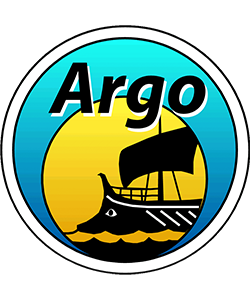| General Requirements | ||
| Requirement | Comment | Who oversees this requirement? |
| The float and its data are consistent with Argo governance (IOC XX-6; IOC-EC_XLI.4) | It is the PI’s responsibility to ensure that floats are managed according to Argo governance. This includes using national points of contact for notifying float deployments and drifting into EEZs. | OceanOPS will monitor consistency with Argo governance. If the float does not conform, OceanOPS will notify national points of contact, who will take whatever action is necessary. |
| The float has a contact point for its entire lifetime, and for the data processing after the float is dead | OceanOPS requires a contact point for all floats identified as Argo floats by their WMO number. Where individuals’ responsibilities change within national programs and research groups, contact points must be maintained. PIs must consider the long-term ownership of and responsibility for their floats. It is possible that ‘ownership’ of a float could be passed to a contact in a national program, but this should be planned before the float becomes part of Argo. | Points of contact in the national program of the PI deploying the float. Where OceanOPS is uncertain of a contact point, OceanOPS will refer to points of contact in the relevant national program. |
| The float PI will recover the float safely if beached | Once a float is part of Argo, the PI must remain responsible for the float or identify delegated responsibility, throughout the float lifetime. The float cannot stop being an Argo float because it has drifted out of a PI’s area of interest, or fulfilled the PI’s initial purpose. It may or may not be possible to delegate this responsibility to points of contact in national programs. | OceanOPS, supported by national points of contact. |
| Data Quality and Management Requirements | ||
| Requirement | Comment | Who oversees this requirement? |
| The data have established end-to-end pathway | Before a Principal Investigator proposes to their national program that a float will become an Argo float, there must be an agreed pathway for:
This should be in place when a float is notified to OceanOPS and added to the Argo data system, which is the moment at which a float becomes an Argo float. |
The person making the notification to OceanOPS.
If this is an established Argo point of contact, If a float is notified to OceanOPS from a |
| The data meet Argo targets for accuracy and vertical sampling characteristics | Sampling recommendations and sensor accuracy are described in two Best Practices papers: | AST and ADMT |
| The PI has agreed data management arrangements with a recognized Argo DAC and delayed-mode group, including the supply of all technical and metadata | The PI is advised to negotiate the pathway for real time and delayed mode activities with one of the recognized Argo DACs before stating in funding applications that floats will be a contribution to Argo. This includes timely delivery of appropriate technical and metadata. Argo DACs may require funding for extra staff time to handle extra floats, sensors and parameters. | Real Time DACs will ensure the necessary arrangements are in place before starting to accept data from new floats. This should be agreed between RT DACs and float PIs before the float is deployed or notified. |
| Addition of new sensors and new mission parameters on floats in the Argo data system requires endorsement from the AST & ADMT | Argo requires all data from all sensors on an Argo float to be made available at the Argo GDACs. This Framework document describes the process for adding new sensors and new mission parameters to Argo. PIs are to contact the Argo Program office (argo@ucsd.ed) who will notify the AST executive committee and ADMT executive committee to evaluate the status within the Framework. | AST executive and ADMT executive |
